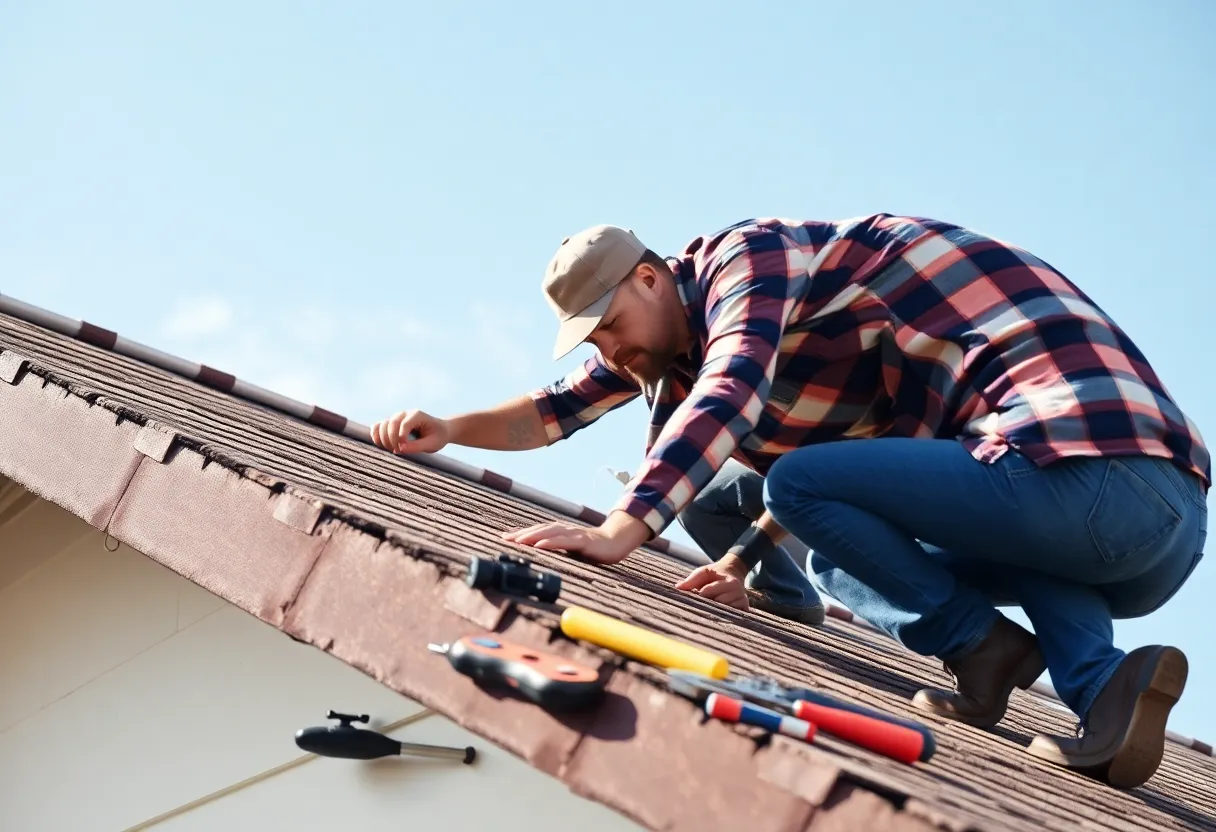

A homeowner carefully inspecting their roof for leaks and damage.
Want to target the right audience? Sponsor our site and choose your specific industry to connect with a relevant audience.
Prominent brand mentions across targeted, industry-focused articles
High-visibility placements that speak directly to an engaged local audience
Guaranteed coverage that maximizes exposure and reinforces your brand presence
Interested in seeing what sponsored content looks like on our platform?
May’s Roofing & Contracting
Forwal Construction
NSC Clips
Real Internet Sales
Suited
Florida4Golf
Click the button below to sponsor our articles:
Sponsor Our ArticlesRoof leaks are more than just annoying; they can lead to significant damage if left unaddressed. The importance of repairing a leaking roof cannot be overstated. This guide provides you with the vital steps needed to effectively tackle roof leaks, arming you with the knowledge necessary to protect your home.
Before initiating repairs, it’s crucial to identify the source of the leak. Water stains on ceilings or walls often indicate a problem, but the actual leak may be located far from these visible marks. Common sources of roof leaks include:
Keep an eye out for these telltale signs:
Repairing roof leaks can be dangerous. Always observe these safety precautions:
Having the right tools and materials on hand simplifies the repair process. You will typically need:
Start by inspecting the roof from the ground. Look for missing shingles or damaged flashing. If safe, ascend to the roof for a closer inspection. Check areas around vents, skylights, and chimneys, as these are common leak sources.
Once you pinpoint the leak:
For small leaks, here are quick fixes:
If the damage is extensive, follow these steps:
Flashing repairs require extra care:
Clogged gutters can lead to water pooling on the roof, causing leaks. Regularly clean your gutters to ensure proper drainage and reduce the risk of roof leaks.
After completing your repairs, carry out a thorough inspection:
To prevent future leaks, incorporate these maintenance tips:
Some scenarios warrant professional assistance:
Professionals have access to specialized tools and experience, ensuring repairs are performed correctly. They can also provide valuable insights on extending the life of your roof.
Repairing roof leaks requires diligence and attention to safety. By identifying symptoms early, utilizing proper techniques, and performing regular maintenance, homeowners can effectively protect their homes from the damaging effects of roof leaks. **Remember—taking timely action can save you from costly repairs in the future.**
News Summary The McDaniels Golf Classic in Columbia commemorated 23 years of support, having raised…
News Summary South Carolina executed inmate Brad Sigmon by firing squad on March 7, 2025.…
News Summary Florida is on high alert as Hurricane Milton intensifies to a Category 5…
News Summary Residents of Columbia, SC are on high alert as severe thunderstorm and tornado…
News Summary Charleston, South Carolina is experiencing a significant boost in trade relations with Canada,…
News Summary Raleigh, North Carolina, has been recognized as the best-performing large city in the…